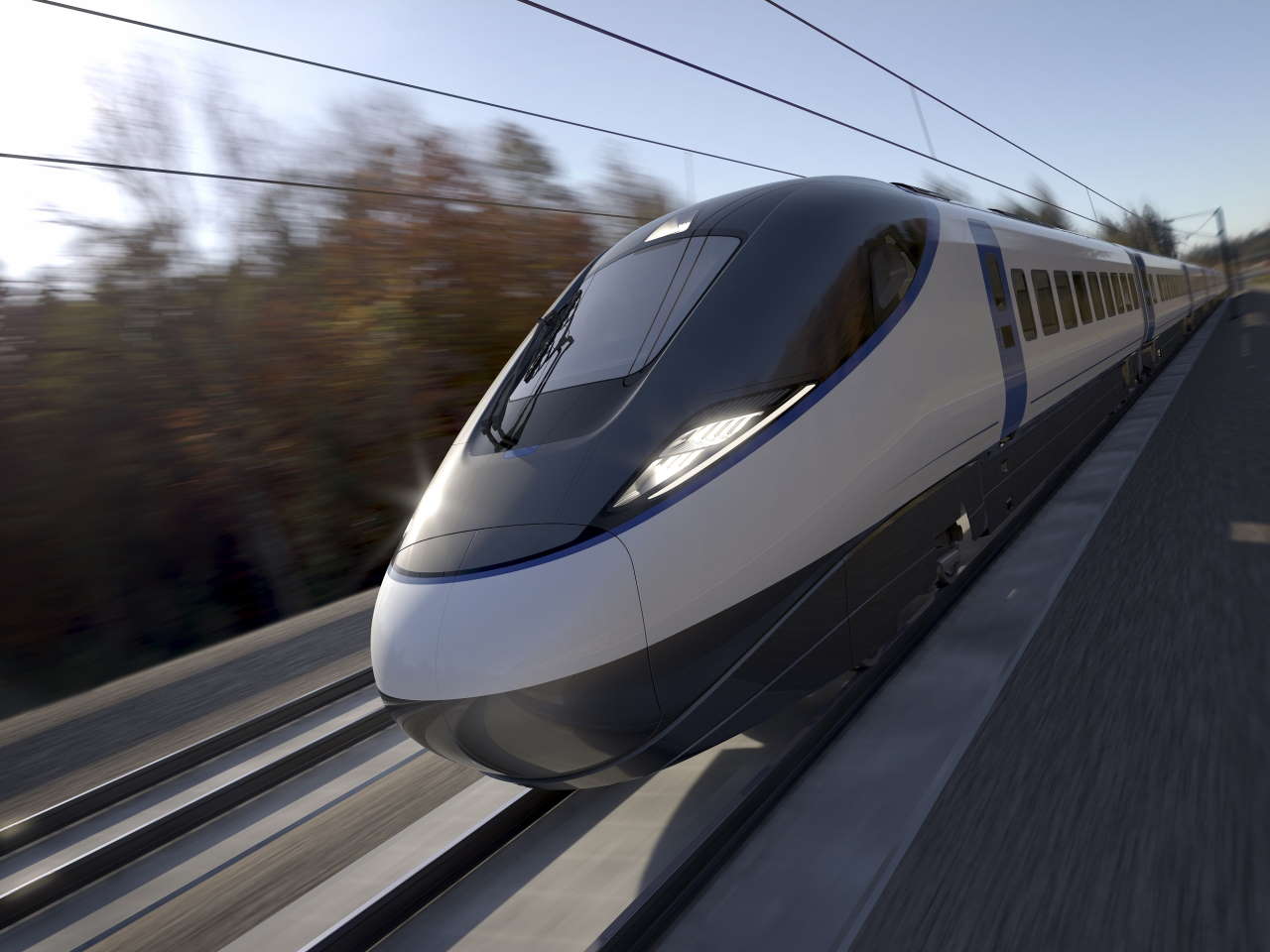The HS2 Minister has made a commitment trains on HS2 will be zero-carbon energy from the outset, driving the government’s goal to make HS2 net zero from 2035 and supporting the government’s 2050 target to tackle climate change.
As part of the drive to net zero, HS2 construction sites are planned to be diesel-free by 2029, and emissions from steel and concrete used in building the railway cut by half by 2030.
HS2’s Net Zero Carbon Plan sets out how HS2 will achieve new carbon reduction milestones, support the decarbonisation of the UK construction sector and reduce the carbon footprint of the programme.
Major new targets include aiming for diesel-free construction sites by 2029, with the first one expected in 2022, and by 2030 reducing carbon emissions from steel and concrete by 50% compared with 2021 levels.
To help achieve this, HS2 is collaborating with research organisations to accelerate innovation in low carbon technologies, such as alternative fuels and renewable energy.
From 2035, carbon emissions will be reduced as much as possible. For those that cannot be eliminated, carbon offsetting will be applied which aims to achieve net zero by using natural or technological methods to remove the same level of emissions that are produced as it takes to build, maintain, and operate HS2.
The work to achieve zero carbon for HS2 from 2035 will be met through a number of new targets, including:
- Using 100% zero-carbon electricity generation to power its trains – making journeys on HS2 zero carbon for emissions from ‘day one’.
- Introducing diesel-free sites, with the first in 2022 and stopping the use of diesel on all sites by 2029.
- Working with supply chain partners and industry peers to set ambitious new science-based targets in 2022 to tackle carbon emission ‘hotspots’ year-on-year as HS2 is built.
- Cutting emissions from concrete and steel by 50% by 2030 compared with 2021 levels.
Investing in innovation and forming partnerships to speed up ways to cut emissions in HS2’s supply chain. - Cutting emissions from sources HS2 owns or controls and indirect emissions from electricity production.
- Offsetting residual carbon emissions that cannot be eliminated as HS2 is built, maintained, and operated from 2035. This includes investigating methods to capture and store carbon emissions, such as planting new trees to absorb carbon dioxide.
Through the HS2 Innovation programme, HS2 is working with the supply chain and research organisations to pilot and implement low-carbon materials, alternative fuels, renewable energy, and new construction methods. Currently, there are 32 innovative projects across the programme, with projected savings of 1.6 million tonnes of carbon emissions.
Highlights of how sustainability is taken into account in the design of HS2 include:
- redesigning the Chilterns tunnel south portal, which cut carbon emissions by 45%;
- making Solihull interchange station the first railway station in the world to achieve BREEAM ‘outstanding’ for its eco-friendly design. BREEAM stands for Building Research Establishment Environmental Assessment Method, and is a method used to assess sustainability in the master plan of projects, infrastructure, and buildings
- redesigning the roof at Old Oak Common station in west London to cut the amount of embodied carbon by reducing the amount of steel by 27%;
- cutting the amount of concrete and steel needed to build the Wendover Dean viaduct in Buckinghamshire, saving 7,433 tonnes of carbon, which is the equivalent to 20,500 return flights from London to Edinburgh;
- cutting the amount of embodied carbon by reducing the depth of paving in the public realm at Curzon Street station in Birmingham by 38%.
Highlights of measures taken during construction include:
- trialling a new low-carbon concrete product that cuts carbon emissions by 42% compared with standard concrete;
- using recycled wind turbine blades to reinforce concrete, thereby cutting carbon emissions for reinforcement by up to 90%;
- using 3D printing to produce reinforced concrete on-site, which cuts the amount of concrete, reduces carbon emission by up to 50%, and cuts deliveries by truck;
- pioneering the first use in the UK of an electric forklift at a major construction site, at the same time achieving the same performance as a conventional model with zero emissions;
- cutting carbon at construction sites by using Clean Air Gas Engine technology, initially in site welfare units.
HS2 Minister Andrew Stephenson said: “We know that the climate crisis demands urgent action and these commitments from HS2 are vital steps towards achieving cleaner UK travel.
“HS2 is a once-in-a-lifetime investment and we want to ensure the country’s biggest infrastructure project, supporting thousands of jobs and businesses, is underpinned by the Government’s ambitions for a greener transport and construction future.”
Mark Thurston, HS2 CEO said: “HS2 Ltd is completely committed to reducing our carbon emissions as we design, build and operate the new railway. We’ve ensured that tackling climate change is an essential feature of all areas of our work – in design, in early works, and throughout major construction, allowing the project to build towards net zero from 2035.
“The new targets announced today demonstrate the significant role HS2 will play in addressing the climate challenge, by providing a low carbon, long-distance transport solution and leading the construction sector to drive down carbon emissions.”






Responses
How can any construction project, buildings, railway lines be zero. Have they taken into account the iron ore coming from Australia? The way that the electricity generated? The infrastructure needed to bring power, materials? The construction of the trains. No one ever includes the lead up to the main event. It is if it does not exist. Like standing in clothes from the Far East, saying they are neutral. It’s rubish